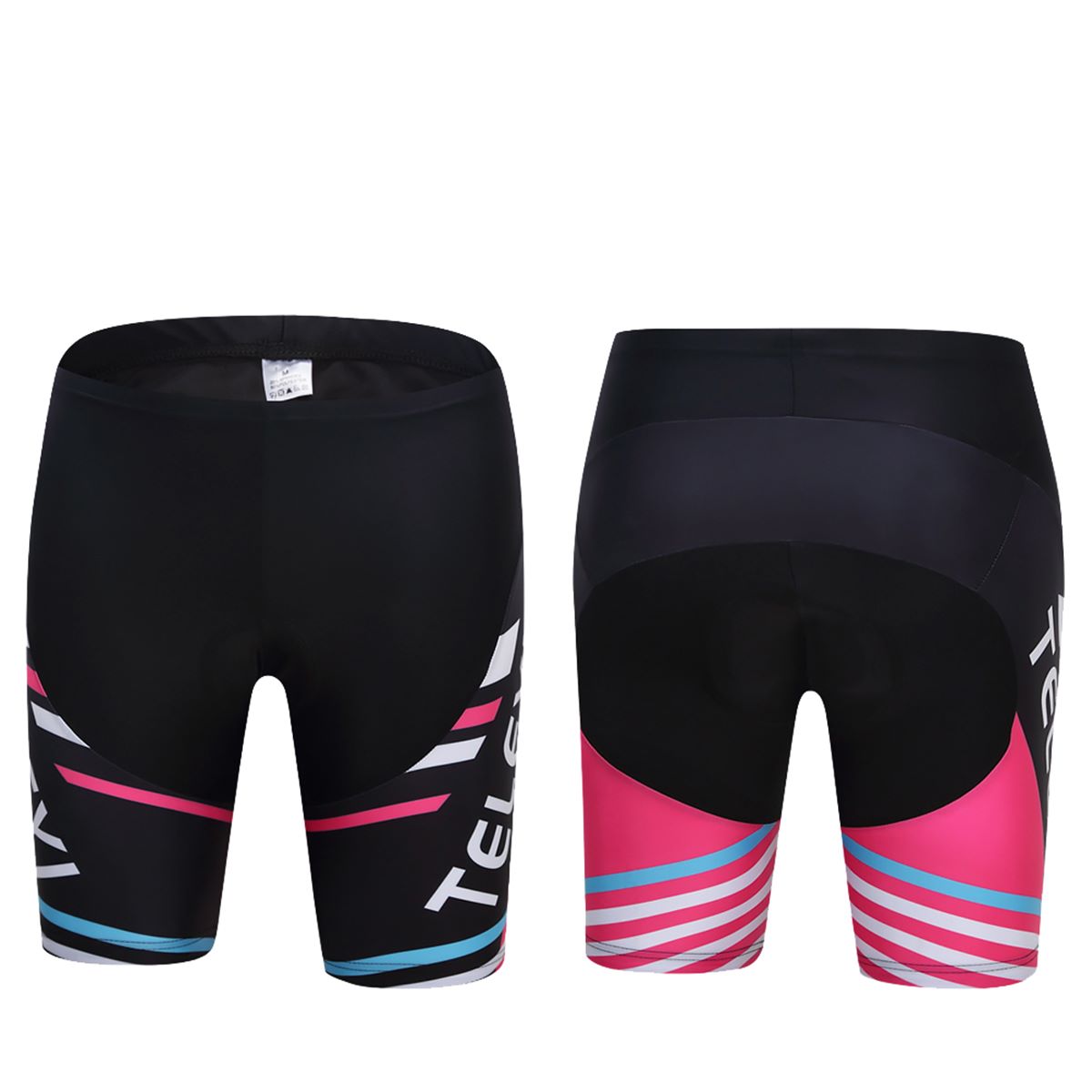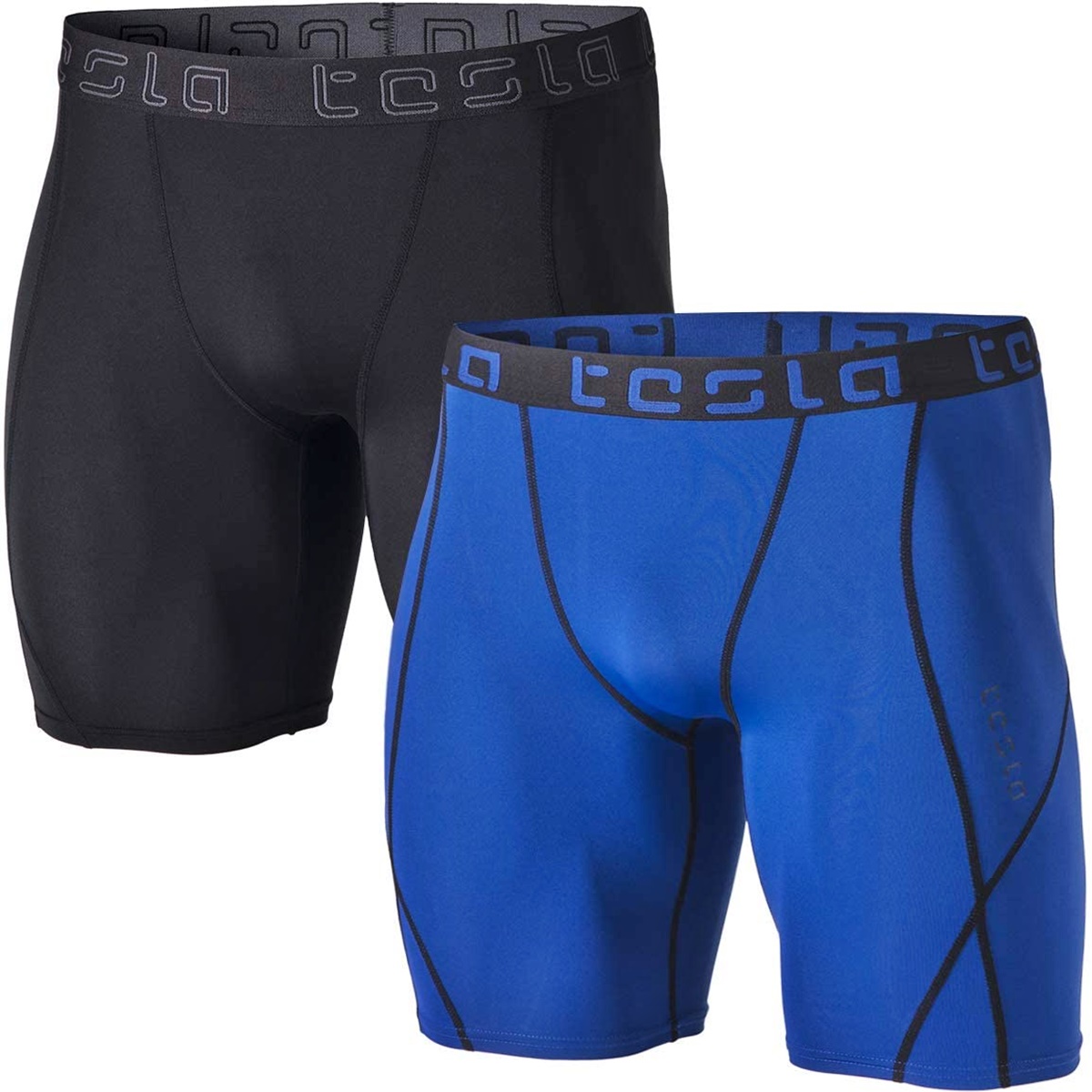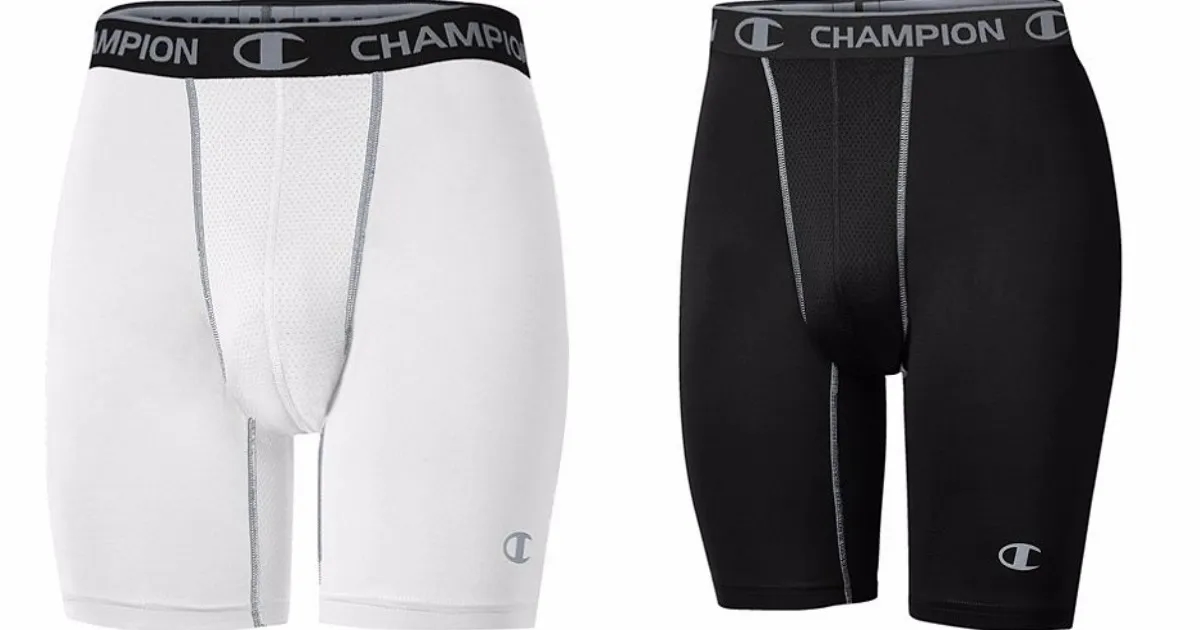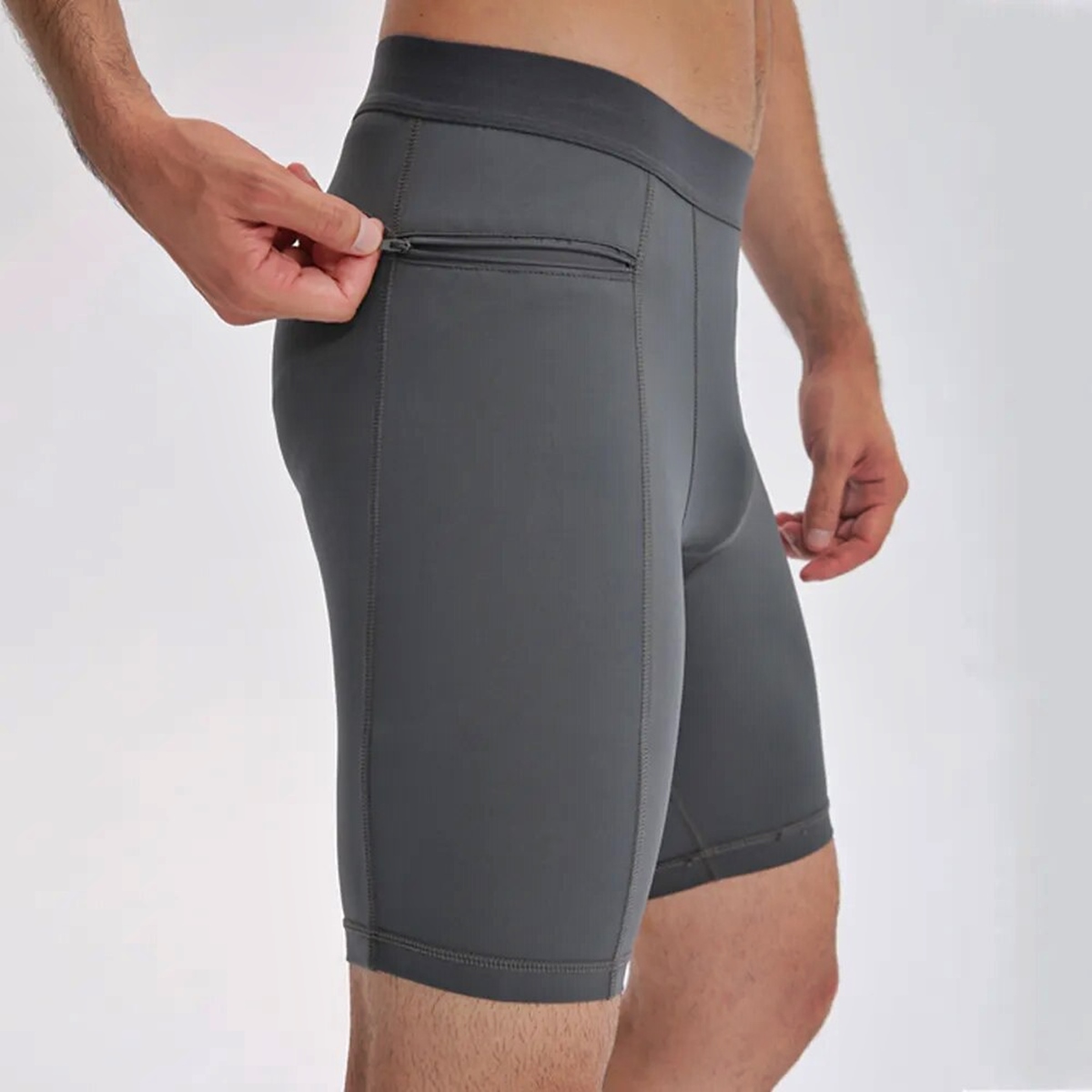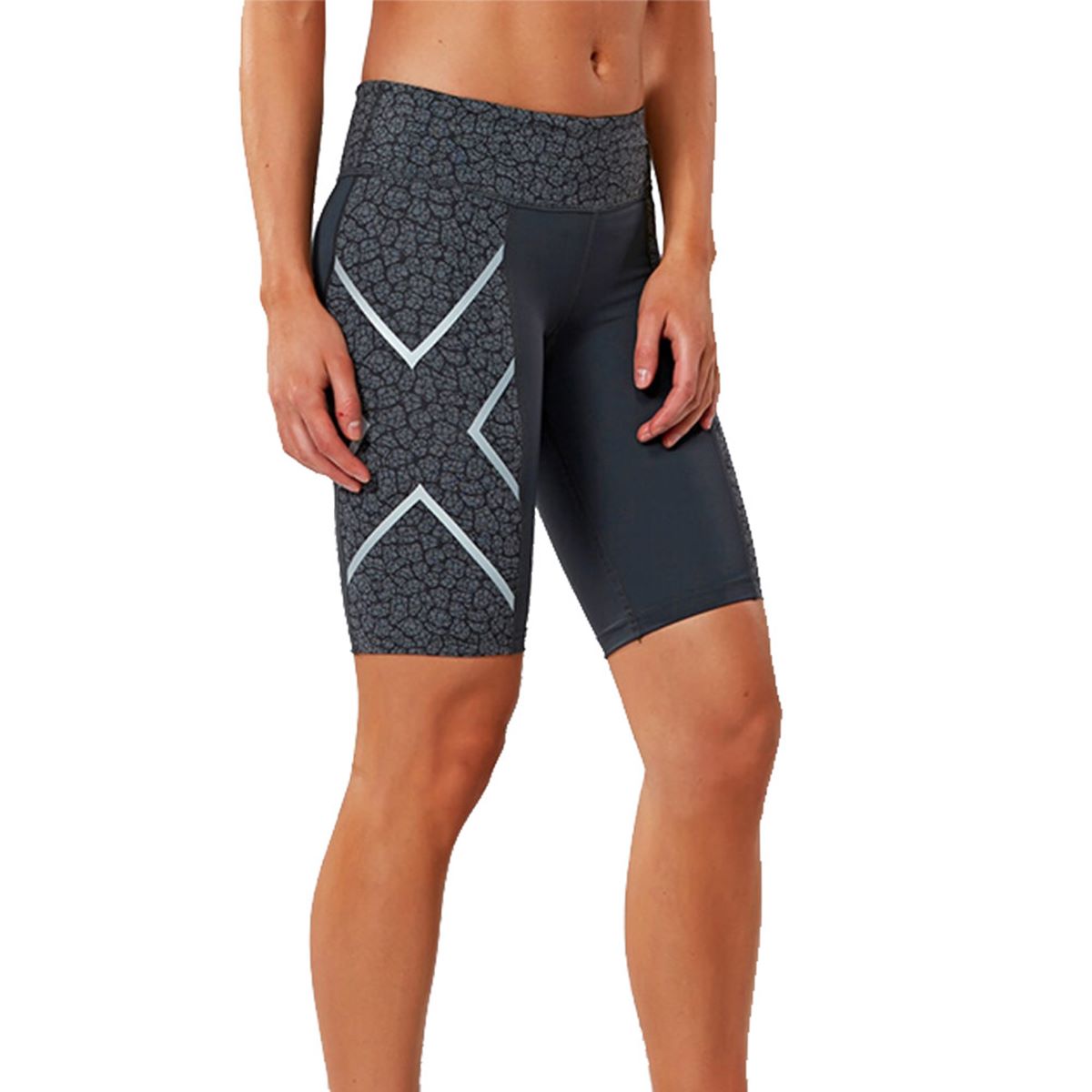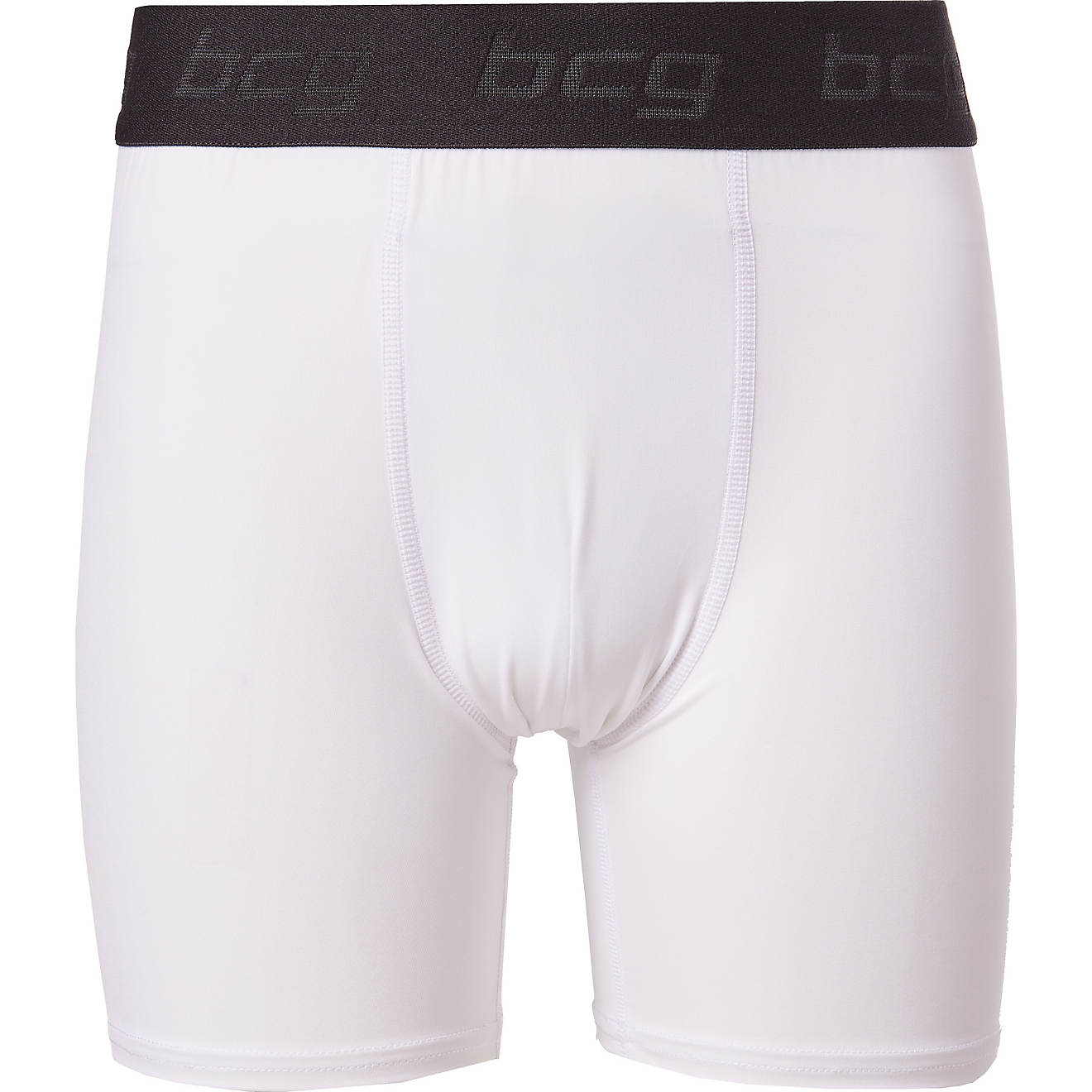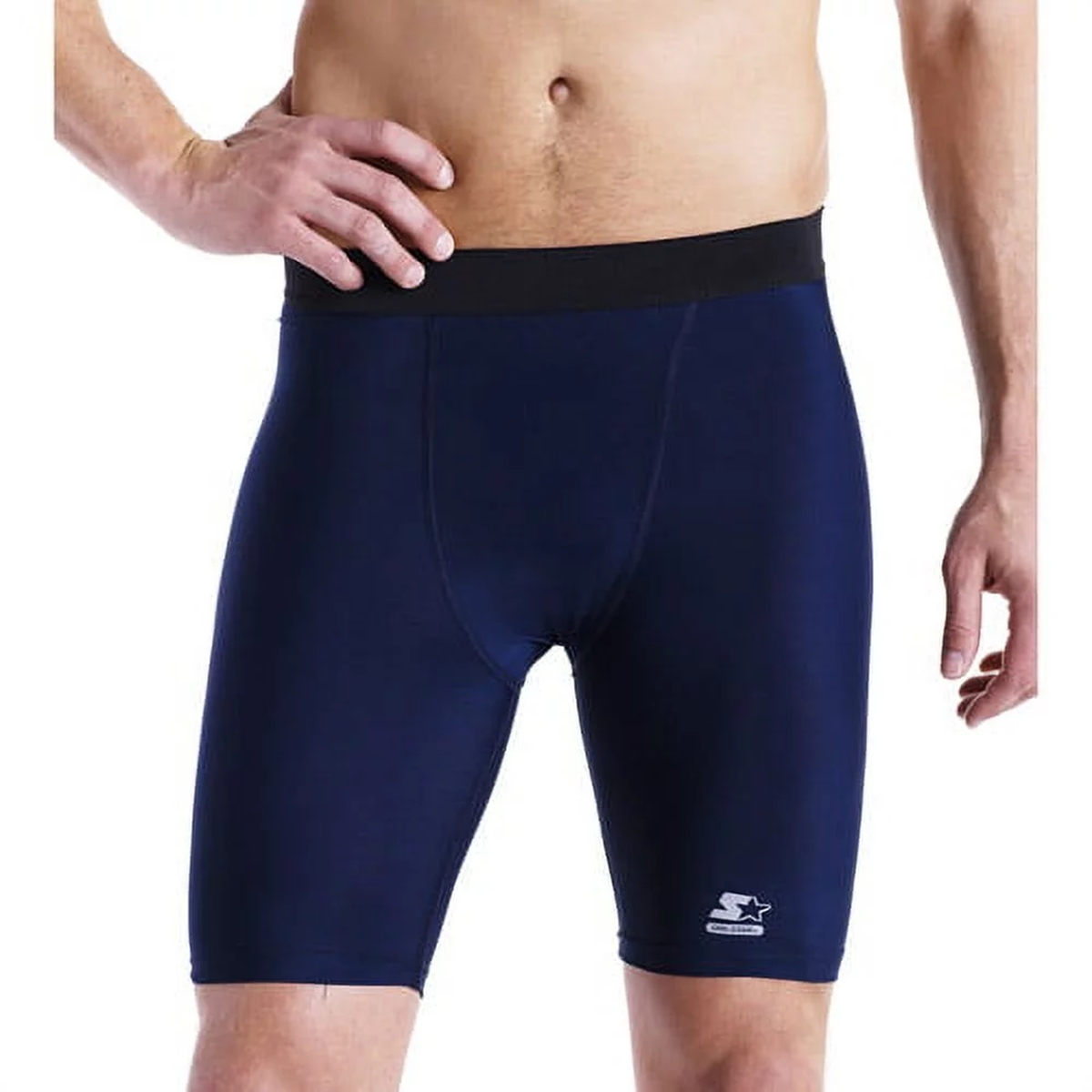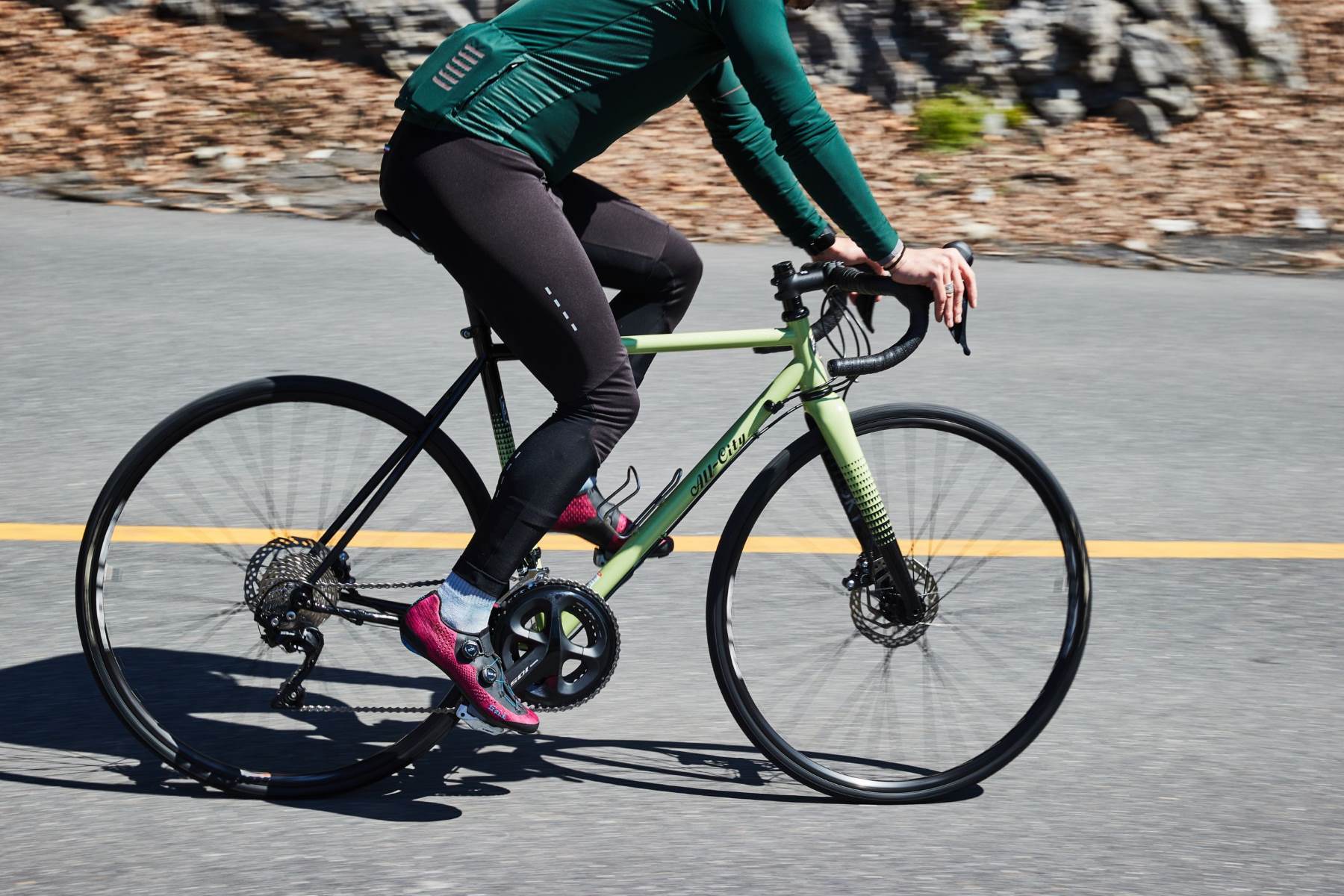

Featured
What Muscles Does Cycling Workout
Modified: January 22, 2024
Discover the muscles targeted during cycling workouts. Strengthen your legs, glutes, and core with our featured cycling exercises. Boost your fitness and pedal your way to success!
Introduction
Cycling is not only a popular recreational activity and mode of transportation, but it is also an excellent form of exercise. Whether you prefer leisurely rides through scenic landscapes or intense road cycling, this activity provides a multitude of benefits for your overall fitness and well-being. One of the key advantages of cycling is its ability to target and strengthen various muscles in your body.
In this article, we will delve into the specific muscles that are worked out during cycling and highlight the importance of incorporating cycling into your fitness routine. By understanding the muscles involved in cycling, you can optimize your training and enhance your performance on the bike.
Before we dive into the specific muscles, it’s important to note that cycling is primarily a lower body workout. While your upper body plays a role in maintaining stability and steering, the majority of the muscular effort is focused on the lower body. That being said, cycling is still a full-body exercise that engages both upper and lower body muscles to varying degrees.
Now, let’s explore the key muscles that are targeted during cycling and understand the benefits of this form of exercise for muscle development.
Importance of cycling as a workout
Cycling offers numerous benefits that make it an ideal workout for people of all ages and fitness levels. Here are some key reasons why cycling is an important exercise:
Cardiovascular Health: Cycling is a great cardiovascular activity that elevates your heart rate and improves blood circulation. Regular cycling helps strengthen your heart, lower blood pressure, and reduce the risk of cardiovascular diseases such as heart attacks and strokes.
Low Impact: Unlike activities such as running or high-impact sports, cycling is a low-impact exercise that puts less stress on your joints and reduces the risk of injuries. This makes it an excellent option for individuals with joint issues or those recovering from injuries.
Strength and Endurance: Cycling is an effective way to build strength and endurance, especially in the lower body muscles. Pedaling against resistance, whether it’s on a flat road or uphill, helps to tone and strengthen your leg muscles, including the quadriceps, hamstrings, glutes, and calves.
Weight Management: Cycling is a calorie-burning activity that can help you maintain a healthy weight or assist in weight loss efforts. A steady-paced cycling session can burn hundreds of calories per hour, making it an effective component of any weight loss or weight management program.
Mental Well-being: Engaging in regular exercise, such as cycling, has been linked to improved mental health and well-being. It can reduce stress levels, boost mood, alleviate symptoms of anxiety and depression, and enhance overall cognitive function.
Joint Mobility: Cycling involves continuous movement of the knees, hips, and ankles, promoting joint mobility and flexibility. Regular cycling can help improve your range of motion and maintain joint health, reducing the risk of stiffness and joint-related issues.
Accessible and Versatile: Cycling can be enjoyed by people of all ages and fitness levels. It can be done outdoors, exploring scenic routes and enjoying fresh air, or indoors on a stationary bike. Additionally, cycling can be easily incorporated into your daily routine, whether it’s commuting to work, running errands, or leisurely rides during your free time.
Overall, cycling provides a host of physical and mental benefits that make it an essential workout for individuals looking to improve their fitness, maintain a healthy weight, and enhance their overall well-being. So, hop on your bike and start reaping the rewards of this fantastic exercise!
Muscles Used in Cycling
When you engage in cycling, various muscles in your body are put to work to power your movements and maintain stability. While cycling is primarily a lower body workout, it also engages several upper body muscles. Let’s take a closer look at the main muscles used during cycling:
Lower Body Muscles:
Quadriceps: The quadriceps, located in the front of your thighs, are heavily engaged during cycling. These muscles are responsible for extending your knees and powering your pedaling motion.
Hamstrings: The hamstrings, located at the back of your thighs, play a vital role in cycling by flexing your knees during the upstroke of the pedal stroke. They work in tandem with the quadriceps to generate power and propel the bike forward.
Glutes: The gluteal muscles, including the gluteus maximus, medius, and minimus, are the largest muscles in your buttocks. These muscles assist in extending your hips and provide stability during the pedal stroke.
Hip Flexors: The hip flexor muscles, including the iliopsoas and rectus femoris, are located in the front of your hips. They are responsible for lifting your thighs towards your chest, which is crucial for maintaining a proper cycling position and generating power.
Calves: The calf muscles, specifically the gastrocnemius and soleus, help to push the pedals downward and provide additional power during the cycling motion. They play a significant role in controlling the movement of the foot and ankle.
Upper Body Muscles:
Core Muscles: Your core muscles, including the abdominals, obliques, and lower back muscles, are engaged in cycling to maintain balance, stability, and proper posture. A strong core is essential for efficient cycling and preventing lower back pain or discomfort.
Shoulders and Arms: While the upper body is not the primary focus of cycling, the muscles in your shoulders and arms play a role in maintaining a relaxed grip on the handlebars and providing stability. The deltoids, biceps, and triceps are minimally engaged during cycling but contribute to overall upper body support.
By understanding the muscles involved in cycling, you can better target these areas during your training sessions. Including exercises that specifically target the cycling muscles can help improve your cycling performance and prevent imbalances or injuries.
Lower Body Muscles
When it comes to cycling, the lower body muscles play a vital role in generating power, maintaining balance, and propelling the bike forward. Let’s take a closer look at the main lower body muscles used during cycling:
Quadriceps: The quadriceps, consisting of the rectus femoris, vastus lateralis, vastus medialis, and vastus intermedius, are the muscles on the front of your thighs. These muscles are heavily engaged during cycling as they work to extend your knees and power the downward portion of the pedal stroke. The quadriceps are essential for generating power and propelling the bike forward.
Hamstrings: The hamstrings, comprised of the biceps femoris, semimembranosus, and semitendinosus, are located at the back of your thighs. They play a crucial role in cycling by flexing your knees during the upstroke of the pedal stroke. This helps to complete the circular motion of the pedal stroke and adds efficiency and power to your cycling technique.
Glutes: The gluteal muscles, including the gluteus maximus, medius, and minimus, are the muscles in your buttocks. These muscles are involved in extending your hips and provide stability during the pedal stroke. The glutes work in conjunction with the quadriceps and hamstrings to generate power and maintain proper alignment and posture while riding.
Hip Flexors: The hip flexor muscles, including the iliopsoas and rectus femoris, are located in the front of your hips. These muscles are responsible for lifting your thighs towards your chest, allowing for a smooth and efficient pedal stroke. Strong hip flexors help to maintain proper cycling position and enhance power output.
Calves: The calf muscles, consisting of the gastrocnemius and soleus, are situated at the back of your lower leg. While the calves are not as heavily engaged in cycling as the quadriceps or hamstrings, they still play a role in pushing the pedals downward and providing additional power. The calf muscles also contribute to controlling the movement of the foot and ankle.
These lower body muscles work in unison to generate power, maintain stability, and propel the bike forward during cycling. It’s important to focus on strengthening and conditioning these muscles to improve your cycling performance and prevent muscle imbalances or injuries.
Quadriceps
The quadriceps, often referred to as the “quads,” are a group of muscles located at the front of your thighs. They are some of the largest and most powerful muscles in your body and play a crucial role in cycling. Let’s explore the importance of the quadriceps in cycling and how to strengthen them:
Function: The primary function of the quadriceps during cycling is to extend your knees, allowing for the downward portion of the pedal stroke. As you push the pedals downward, the quadriceps engage to generate power and propel the bike forward. They work together with the hamstrings to complete the circular motion of the pedal stroke.
Muscle Composition: The quadriceps consist of four muscles: the rectus femoris, vastus lateralis, vastus medialis, and vastus intermedius. The rectus femoris is the only quadriceps muscle that crosses both the hip and knee joints, making it biarticular. The vastus muscles originate from the femur and insert into the tibia via the patellar tendon.
Engagement during Cycling: Throughout the entire pedal stroke, the quadriceps are engaged to varying degrees. At the top of the stroke, as you initiate the downward motion, the quadriceps contract to extend your knees and drive the pedal downward. As the pedal approaches the bottom of the stroke, the quadriceps are fully engaged to generate maximum power and propel the bike forward. They continue to work during the recovery phase as you prepare for the next pedal stroke.
Strengthening the Quadriceps: To improve your quad strength for cycling, there are various exercises you can incorporate into your fitness routine. Squats, lunges, leg presses, and step-ups are all effective exercises that target the quadriceps. You can also perform cycling-specific exercises, such as seated leg extensions, to isolate and strengthen the quadriceps. It’s important to gradually increase the intensity and resistance of these exercises to challenge your muscles and promote strength gains.
Flexibility and Stretching: In addition to strength training exercises, it’s essential to maintain flexibility in your quadriceps to promote optimal performance and prevent imbalances or injuries. Regular stretching exercises, such as standing quad stretches or seated quad stretches, can help improve quad flexibility. Incorporating foam rolling or massage can also help release any tightness in the quadriceps and promote recovery.
Strong quadriceps are crucial for generating power and maintaining efficient pedal strokes during cycling. By incorporating targeted exercises, maintaining flexibility, and properly warming up before rides, you can ensure that your quadriceps are prepared to meet the demands of cycling and enhance your overall performance on the bike.
Hamstrings
The hamstrings are a group of muscles located at the back of your thighs. They play a vital role in cycling by assisting in the flexion of your knees during the upstroke of the pedal stroke. Let’s explore the importance of the hamstrings in cycling and how to strengthen them:
Function: The hamstrings are responsible for flexing the knees and aiding in the upstroke of the pedal stroke. They work in conjunction with the quadriceps to complete the circular motion of the pedal stroke and enhance power output. By engaging the hamstrings, you can achieve a more efficient and balanced pedal stroke, maximizing your cycling performance.
Muscle Composition: The hamstrings consist of three main muscles: the biceps femoris, semimembranosus, and semitendinosus. These muscles originate from the ischial tuberosity (sit bones) and insert into various points on the tibia and fibula.
Engagement during Cycling: As you pedal, the hamstrings work during the upstroke phase of the pedal stroke. They contract to flex your knees and pull the pedals up to prepare for the next downward motion. While the quadriceps play a more significant role in power generation during the downward stroke, the hamstrings contribute to the efficiency and fluidity of your cycling motion.
Strengthening the Hamstrings: To strengthen your hamstrings for cycling, it’s important to incorporate exercises that target these muscles. Exercises such as deadlifts, hamstring curls, lunges, and glute-ham raises are effective for building hamstring strength. Additionally, including exercises that focus on eccentric contractions, such as Nordic hamstring curls, can help prevent hamstring strains and improve muscular control during the pedal stroke.
Stretching and Flexibility: Maintaining flexibility in your hamstrings is essential for optimal performance and injury prevention. Incorporate dynamic stretches, such as leg swings or lunges with a hamstring stretch, in your warm-up routine before cycling. Static stretches, such as seated or standing hamstring stretches, can also be performed after your ride or as part of your post-workout cool-down.
Balance and Muscle Imbalances: It’s crucial to maintain a balance between the strength of your quadriceps and hamstrings. Muscle imbalances, such as weak hamstrings compared to overly dominant quadriceps, can lead to inefficient movement patterns and increased risk of injuries. By focusing on both strength and flexibility exercises for both muscle groups, you can help prevent imbalances and maintain optimal performance on the bike.
Strengthening and properly conditioning your hamstrings is key to optimizing your cycling performance and preventing injuries. By incorporating targeted exercises, stretching, and maintaining a balance between quadriceps and hamstring strength, you can enhance your pedal stroke and improve overall cycling efficiency.
Glutes
The gluteal muscles, commonly referred to as the glutes, are a group of muscles located in your buttocks. They play a crucial role in cycling by providing power, stability, and balance during the pedal stroke. Let’s explore the importance of the glutes in cycling and how to strengthen them:
Function: The main function of the glutes during cycling is hip extension. Your glutes work to extend your hips, allowing you to generate power and propel the bike forward during the pedal stroke. Strong glutes are essential for pedal stroke efficiency and overall cycling performance.
Muscle Composition: The glutes consist of three main muscles: the gluteus maximus, gluteus medius, and gluteus minimus. The gluteus maximus, being the largest muscle in the body, provides most of the power during hip extension. The gluteus medius and gluteus minimus play a crucial role in stabilizing the pelvis and maintaining proper alignment during the pedal stroke.
Engagement during Cycling: The glutes are engaged throughout the pedal stroke, but they play a more active role during the downward phase. As you push the pedals down, the glutes contract to extend your hips, generating power and propelling the bike forward. They also provide stability and balance as you transfer your body weight from one leg to the other during the stroke.
Strengthening the Glutes: To strengthen your glutes for cycling, it’s important to incorporate targeted exercises that engage these muscles. Squats, lunges, hip thrusts, and glute bridges are effective exercises that work the glutes. You can also incorporate single-leg exercises, such as single-leg squats or single-leg glute bridges, to improve stability and balance. It’s important to focus on proper form and activation of the glutes during these exercises for optimal results.
Climbing and Power Output: Strong glutes are particularly important when it comes to climbing or generating power on uphill sections. The glutes play a significant role in generating the power needed to conquer inclines. By strengthening and conditioning your glutes, you can improve your climbing abilities and overall power output on the bike.
Functional Movements and Injury Prevention: Strong glutes are essential for overall functional movement and injury prevention. Weak glutes can lead to imbalances, poor alignment, and increased risk of injuries in other areas, such as the knees, lower back, or hips. By focusing on glute strength and activation, you can improve overall functional movement and reduce the likelihood of injury.
Incorporating exercises that target and strengthen the glutes into your training routine will result in improved power output, stability, and overall performance on the bike. By focusing on glute strength, you can enhance your pedal stroke efficiency and ensure a well-balanced and powerful cycling experience.
Hip Flexors
The hip flexors are a group of muscles located in the front of your hips. They play a crucial role in cycling by lifting your thighs towards your chest, allowing for a smooth and efficient pedal stroke. Let’s explore the importance of the hip flexors in cycling and how to maintain their strength and flexibility:
Function: The primary function of the hip flexors during cycling is to lift your thighs towards your chest. This action is crucial in maintaining an effective cycling position and generating power during the pedal stroke. The hip flexors work in tandem with other muscles to ensure a fluid and efficient cycling motion.
Muscles Involved: The hip flexors include several muscles, such as the iliopsoas and rectus femoris. The iliopsoas consists of two muscles: the psoas major and iliacus. These muscles originate from the lumbar spine and pelvis, and they insert into the femur. The rectus femoris is part of the quadriceps group and crosses both the hip and knee joints.
Engagement during Cycling: The hip flexors are engaged during the upstroke phase of the pedal stroke. As you complete the downward motion and prepare for the next pedal stroke, the hip flexors contract to lift your thighs towards your chest. Proper engagement of the hip flexors ensures a balanced and efficient pedal stroke, contributing to increased power output and reduced energy wastage.
Stretching and Flexibility: Maintaining flexibility in your hip flexors is essential for optimal performance and injury prevention. Tight hip flexors can lead to discomfort or lower back pain during cycling. Incorporate dynamic stretches, such as leg swings or lunges with a hip flexor stretch, during your warm-up routine before cycling. Static stretches, such as kneeling hip flexor stretches, can be performed after your ride or as part of your post-workout cool-down.
Core Stability: Strong hip flexors contribute to overall core stability and balance on the bike. They work with the abdominal and lower back muscles to maintain proper cycling posture and prevent excessive strain on the lower back. A strong and stable core allows for efficient power transfer and reduced risk of injuries associated with poor cycling posture.
Cadence and Efficiency: The hip flexors also play a role in maintaining an optimal cadence during cycling. The ability to lift and lower your thighs efficiently allows for a smooth and rhythmic pedal stroke. By focusing on hip flexor strength and flexibility, you can improve your cadence and overall cycling efficiency.
Regular stretching exercises, combined with strengthening exercises that target the hip flexors, can help maintain their flexibility and strength. By keeping your hip flexors in good condition, you can enhance your pedal stroke, maintain proper cycling posture, and minimize the risk of discomfort or pain during your rides.
Calves
The calf muscles are located at the back of your lower leg and play an important role in cycling. While not as heavily engaged as the quadriceps or hamstrings, the calves contribute to the pedaling motion and provide additional power. Let’s explore the significance of the calves in cycling and how to strengthen and maintain their flexibility:
Function: The primary function of the calves during cycling is to push the pedals downward. The calves assist in extending the ankles, allowing for a complete pedal stroke and efficient transfer of power to the bike. While the majority of the muscle work is done by the larger muscle groups, such as the quadriceps and hamstrings, the calves play a supporting role in generating propulsive force.
Muscle Composition: The calf muscles consist of two main muscles: the gastrocnemius and the soleus. The gastrocnemius is the larger muscle and gives the calf its visible shape. It crosses both the knee and ankle joints. The soleus, located underneath the gastrocnemius, plays a vital role in ankle flexion and stability during the pedal stroke.
Engagement during Cycling: Throughout the pedal stroke, the calves are engaged to varying degrees. At the top of the stroke, as you initiate the downward motion, the calves contract to push the pedals downward. They continue to work during the power phase, when the majority of the muscle engagement occurs, and at the bottom of the stroke as you prepare for the next revolution. The calves also assist in controlling the movement of the foot and ankle.
Strengthening the Calves: To strengthen your calves for cycling, it’s important to incorporate exercises that target these muscles. Calf raises, whether done with bodyweight or added resistance, are a simple yet effective exercise to strengthen the calves. You can perform them on a flat surface, on a stair or step, or using a calf raise machine at the gym. Varying the direction of the calf raises, such as performing them with toes pointed inward or outward, can help target different areas of the calves.
Flexibility and Stretching: Maintaining flexibility in your calves is essential for optimal performance and injury prevention. Tight calves can limit ankle range of motion, leading to inefficient pedal strokes or discomfort during cycling. Regular stretching exercises, such as standing calf stretches or seated calf stretches, can help improve calf flexibility. Foam rolling or massage can also be beneficial in releasing any tightness or knots in the calf muscles.
Endurance and Fatigue Resistance: Strong and conditioned calves contribute to overall endurance and fatigue resistance during longer rides. By targeting and strengthening the calves, you can delay muscle fatigue and maintain power output throughout your cycling sessions.
Incorporating exercises that target and strengthen the calves, along with regular stretching and flexibility exercises, will help you maintain strong and resilient calf muscles. By giving attention to your calves, you can optimize your pedal stroke, improve power transfer, and enhance overall performance on the bike.
Upper Body Muscles
While cycling primarily focuses on the lower body muscles, the upper body also plays a role in supporting stability, control, and overall posture. Let’s explore the key upper body muscles involved in cycling:
Core Muscles: Your core muscles, including the abdominals, obliques, and lower back muscles, play a crucial role in maintaining stability and proper posture while cycling. A strong core helps to stabilize your body and transfer power efficiently from your lower body to the pedals. Engaging and strengthening your core muscles will enhance your overall cycling performance and prevent lower back discomfort.
Shoulders and Arms: While the movement of the upper body is minimal during cycling, the muscles in your shoulders and arms contribute to maintaining a relaxed and stable upper body position. The deltoids, located in your shoulders, aid in keeping your upper body steady. The biceps and triceps in your arms assist in maintaining a firm grip on the handlebars and providing support where needed.
Postural Muscles: Various muscles in the upper body, including the upper back, chest, and neck muscles, help maintain proper posture while cycling. These muscles work together to prevent slouching, keeping your back and neck in a neutral position. Good posture not only improves aerodynamics but also reduces the risk of strain or injury in the upper body.
Importance of Upper Body Engagement: While the upper body muscles are not the primary focus of cycling, engaging and strengthening them contribute to overall stability, control, and efficiency on the bike. A strong and stable upper body allows for better transfer of power, improved handling of the bike, and enhanced overall endurance during longer rides.
Exercises for Upper Body Strength: Incorporating exercises that target the upper body muscles can complement your cycling training regimen. Planks, push-ups, pull-ups, and rowing exercises are effective for building upper body strength. Additionally, including exercises that focus on shoulder stability, such as shoulder presses or lateral raises, can enhance control and support during cycling.
Stretching and Flexibility: Maintaining flexibility in the upper body is essential for maintaining proper posture and reducing muscle tension or tightness. Regular stretching exercises, such as chest stretches, shoulder stretches, and upper back stretches, can help improve upper body flexibility and prevent discomfort during long rides.
While your lower body muscles bear the majority of the load during cycling, it’s important to recognize the role of the upper body muscles in providing stability, control, and support. By incorporating targeted exercises and maintaining upper body flexibility, you can improve your overall cycling performance and maintain a balanced and efficient riding position.
Core Muscles
Your core muscles play a critical role in cycling by providing stability, balance, and power transfer between your upper and lower body. A strong core is essential for maintaining proper posture, reducing the risk of injuries, and optimizing your cycling performance. Let’s explore the significance of core muscles in cycling and how to strengthen them:
Function: The core muscles, including the abdominals, obliques, and lower back muscles, act as a powerhouse for your entire body. They stabilize your spine, pelvis, and hips during the pedaling motion, helping to maintain a strong and efficient position on the bike. The core muscles also facilitate the transfer of power generated by your lower body to the upper body and handlebars, contributing to a smoother and more controlled riding experience.
Postural Support: A strong core is vital for maintaining proper posture while cycling. By engaging your core muscles, you can prevent slouching or excessive rounding of the back, reducing the strain on your spine and minimizing the risk of lower back pain. Good posture not only improves comfort and efficiency but also enhances aerodynamics, allowing you to slice through the air more effectively.
Balance and Stability: The core muscles provide stability and balance, especially when navigating challenging terrain or performing sprint efforts. A strong core helps to stabilize your body and maintain control over the bike, allowing you to handle bumps, turns, and accelerations with ease. It also contributes to better bike handling and minimizes energy wastage due to unnecessary movements or swaying.
Strength and Power Transfer: Your core serves as a bridge between the upper and lower body, facilitating the transfer of power during the pedaling motion. By engaging your core muscles and maintaining a stable core, you can maximize the efficiency of power transfer from your legs to the pedals. This leads to increased pedaling effectiveness and overall cycling performance.
Exercises for Core Strength: Incorporating exercises that specifically target your core muscles can help strengthen and stabilize this crucial area. Planks, Russian twists, bicycle crunches, and stability ball exercises are excellent choices for engaging your core muscles. Additionally, including exercises that work the lower back, such as back extensions or supermans, can further enhance core stability and support for cycling.
Maintaining Flexibility: Flexibility in the core muscles is just as important as strength. Stretching exercises such as cat-cow stretches, seated twists, or lying torso twists can help maintain flexibility and prevent stiffness in the core. Incorporating yoga or Pilates into your training routine can also help improve core flexibility and balance.
Developing a strong and stable core is key to optimizing your cycling performance and reducing the risk of injuries. By incorporating targeted exercises, maintaining flexibility, and focusing on good posture, you can enhance your overall cycling experience and ride with greater comfort, efficiency, and control.
Shoulders and Arms
While cycling primarily engages the lower body muscles, the muscles in your shoulders and arms play a supporting role in maintaining stability, control, and comfort on the bike. Let’s explore the significance of the shoulders and arms in cycling:
Shoulder Stability: The muscles in your shoulders help to maintain stability and proper posture while cycling. The deltoids, located in your shoulder region, play a key role in keeping your upper body steady and aligned. They assist in controlling the position of your shoulders, preventing excessive movement or sway during the pedaling motion.
Arm Support and Grip: One of the primary functions of the arms during cycling is to support your upper body and provide a comfortable grip on the handlebars. Strong arm muscles, including the biceps, triceps, and forearm muscles, help to maintain a firm and secure grip on the handlebars, enhancing control and stability while riding.
Efficient Arm Positioning: Proper arm positioning and relaxation are essential for smooth and efficient pedaling. Your arm muscles should be relaxed, with a slight bend at the elbows, to allow for efficient transfer of power from your legs to the pedals. Avoid tensing your arms or gripping the handlebars too tightly, as this can lead to fatigue and unnecessary energy expenditure.
Reducing Upper Body Fatigue: By maintaining proper form and relaxation in your shoulders and arms, you can minimize upper body fatigue during longer rides. Tension or fatigue in your upper body can adversely affect your overall cycling performance, so it’s important to pay attention to your shoulder and arm positioning and make necessary adjustments to ensure optimal comfort and endurance.
Stretching and Relaxation: Incorporating shoulder and arm stretches into your warm-up and cool-down routines can help maintain flexibility and relieve tension in these areas. Shoulder shrugs, arm circles, and tricep stretches can help loosen up tight muscles and improve overall range of motion.
Upper Body Strength: While upper body strength is not the primary focus of cycling, it can provide added benefits, such as improved stability and control. Incorporating exercises that target your arms and shoulders, like push-ups, pull-ups, or resistance band exercises, can help develop strength in these areas. However, it’s important to strike a balance and avoid overdeveloping the upper body, as excessive muscle mass can add unnecessary weight and hinder cycling performance.
While the focus of cycling is primarily on the lower body, the muscles in your shoulders and arms play a vital supportive role. By maintaining proper positioning, relaxation, and flexibility in these areas, you can enhance your overall cycling experience, ride with greater comfort and control, and minimize upper body fatigue.
Benefits of Cycling for Muscle Development
Cycling offers a multitude of benefits for muscle development, making it an excellent form of exercise for individuals looking to build strength, endurance, and overall muscle tone. Let’s explore the various advantages that cycling provides for muscle development:
Lower Body Muscles: Cycling predominantly targets the lower body muscles, including the quadriceps, hamstrings, glutes, hip flexors, and calves. These muscles undergo repeated contractions and extensions during each pedal stroke, resulting in improved strength, power, and endurance. Regular cycling helps to tone and sculpt these muscles, leading to increased muscle definition and performance.
Total Body Workout: While the lower body muscles bear the brunt of the workload during cycling, the upper body muscles also receive benefits. The core muscles, including the abdominals and lower back muscles, are engaged to maintain stability and optimal posture on the bike. The muscles in the shoulders and arms contribute to maintaining grip and stability on the handlebars. Thus, cycling offers a complete body workout and helps to build overall muscle strength and balance.
Non-Impact Nature: Cycling is a low-impact exercise that places minimal stress on the joints. Unlike high-impact activities such as running or jumping, cycling reduces the risk of joint injuries and allows for longer durations of exercise. This makes cycling an attractive option for individuals looking to build muscle without subjecting their joints to excessive strain.
Muscle Endurance: Cycling requires a sustained effort over a period of time, which helps to improve muscle endurance. Regular cycling workouts challenge your muscles to perform for an extended duration, resulting in increased stamina and resistance to fatigue. As your muscles adapt to the demands of cycling, you’ll find that you can ride for longer distances and tackle more challenging terrains.
Cardiovascular Benefits: Cycling is an excellent cardiovascular exercise that elevates heart rate and improves overall cardiovascular health. Engaging in regular cycling workouts improves heart and lung function, increases oxygen delivery to muscles, and enhances the body’s ability to utilize oxygen efficiently. As a result, your muscles receive optimal oxygen and nutrient supply, allowing them to perform at their best and facilitate growth and development.
Weight Management: Cycling is an effective activity for weight management and body composition improvement. It is a calorie-burning exercise that helps to increase energy expenditure and promote fat burning. Regular cycling workouts, when combined with a balanced diet, can contribute to weight loss and promote the development of lean muscle mass.
Mental Health Benefits: Engaging in regular exercise, including cycling, has been proven to have numerous mental health benefits. Cycling helps to reduce stress, improve mood, boost self-esteem, and alleviate symptoms of anxiety and depression. These positive mental health effects can further contribute to overall well-being and motivation to continue with a consistent cycling routine.
Cycling is not only an enjoyable and convenient form of exercise, but it also offers significant benefits for muscle development. By incorporating regular cycling workouts into your fitness routine, you can build strength, endurance, and muscle tone throughout your body while enjoying the many other physical and mental health benefits that cycling provides.
Conclusion
Cycling is a versatile and effective form of exercise that offers numerous benefits for muscle development and overall fitness. By understanding the muscles used in cycling and their specific roles, individuals can optimize their training and enhance their performance on the bike.
The lower body muscles, including the quadriceps, hamstrings, glutes, hip flexors, and calves, are heavily engaged during cycling. These muscles work together to generate power, propel the bike forward, and maintain stability throughout the pedal stroke. Strengthening and conditioning these muscles not only improves cycling performance but also contributes to toned and defined leg muscles.
While the lower body muscles take the lead, the upper body muscles also play important supporting roles in cycling. The core muscles provide stability, balance, and power transfer between the upper and lower body, while the muscles in the shoulders and arms aid in maintaining proper posture, stability, and control on the bike.
Cycling offers a wealth of benefits for muscle development. It is a low-impact exercise that reduces stress on the joints, making it suitable for individuals of all fitness levels. The sustained effort required during cycling workouts improves muscle endurance, cardiovascular health, and overall body composition.
In addition to the physical benefits, cycling also promotes mental well-being. The rhythmic motion, fresh air, and connection with nature during outdoor rides contribute to reduced stress, improved mood, and enhanced overall cognitive function.
To fully maximize the muscle-building potential of cycling, it is important to focus on proper form, incorporate targeted strength and flexibility exercises, maintain a balanced training program, and gradually increase intensity and duration. By doing so, individuals can achieve optimal muscle development, improve overall fitness, and experience the many rewards that cycling has to offer.

